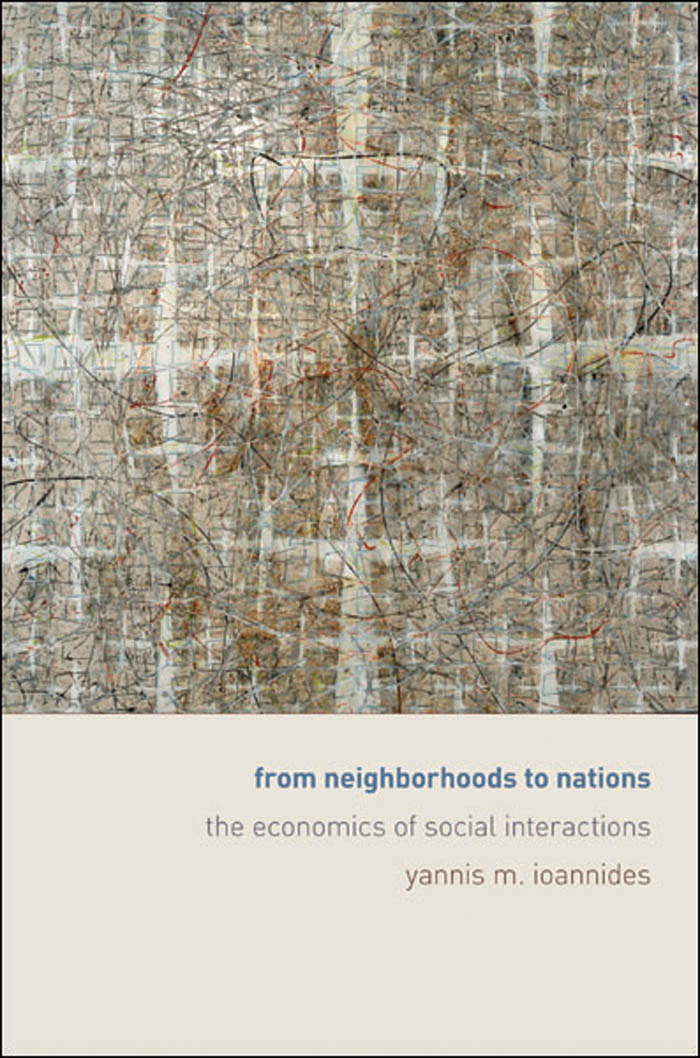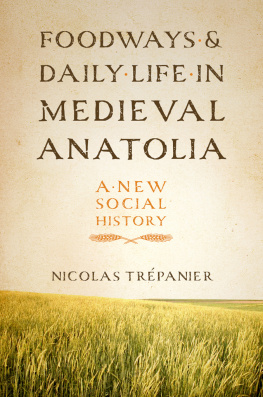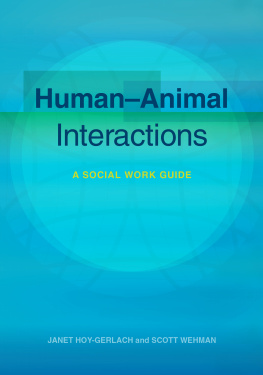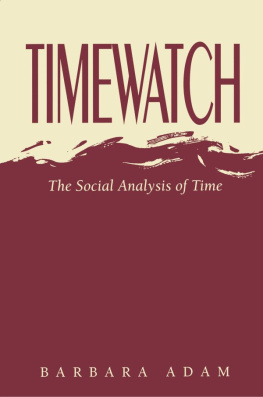Ioannides - From neighborhoods to nations: the economics of social interactions
Here you can read online Ioannides - From neighborhoods to nations: the economics of social interactions full text of the book (entire story) in english for free. Download pdf and epub, get meaning, cover and reviews about this ebook. City: Princeton, year: 2017, publisher: Princeton University Press, genre: Politics. Description of the work, (preface) as well as reviews are available. Best literature library LitArk.com created for fans of good reading and offers a wide selection of genres:
Romance novel
Science fiction
Adventure
Detective
Science
History
Home and family
Prose
Art
Politics
Computer
Non-fiction
Religion
Business
Children
Humor
Choose a favorite category and find really read worthwhile books. Enjoy immersion in the world of imagination, feel the emotions of the characters or learn something new for yourself, make an fascinating discovery.

- Book:From neighborhoods to nations: the economics of social interactions
- Author:
- Publisher:Princeton University Press
- Genre:
- Year:2017
- City:Princeton
- Rating:3 / 5
- Favourites:Add to favourites
- Your mark:
- 60
- 1
- 2
- 3
- 4
- 5
From neighborhoods to nations: the economics of social interactions: summary, description and annotation
We offer to read an annotation, description, summary or preface (depends on what the author of the book "From neighborhoods to nations: the economics of social interactions" wrote himself). If you haven't found the necessary information about the book — write in the comments, we will try to find it.
Ioannides: author's other books
Who wrote From neighborhoods to nations: the economics of social interactions? Find out the surname, the name of the author of the book and a list of all author's works by series.
From neighborhoods to nations: the economics of social interactions — read online for free the complete book (whole text) full work
Below is the text of the book, divided by pages. System saving the place of the last page read, allows you to conveniently read the book "From neighborhoods to nations: the economics of social interactions" online for free, without having to search again every time where you left off. Put a bookmark, and you can go to the page where you finished reading at any time.
Font size:
Interval:
Bookmark:

From Neighborhoods to Nations
The Economics of Social Interactions
Yannis M. Ioannides
PRINCETON UNIVERSITY PRESS
PRINCETON AND OXFORD
Copyright 2013 by Princeton University Press
Published by Princeton University Press, 41 William Street, Princeton,
New Jersey 08540
In the United Kingdom: Princeton University Press, 6 Oxford Street, Woodstock,
Oxfordshire OX20 1TW
press.princeton.edu
Jacket illustration: Chance Construction 2, 2008, 59 59 m/m on sintra.
Thaddeus Beal. Photo by Garrick Cole.
All Rights Reserved
Library of Congress Cataloging-in-Publication Data
Ioannides, Yannis Menelaos.
From neighborhoods to nations : the economics of social interactions / Yannis M. Ioannides.
p. cm.
Includes bibliographical references and index.
ISBN 978-0-691-12685-2 (hardcover : alk. paper) 1. Social interactionEconomic aspects. 2. EconomicsSociological aspects. I. Title.
HM548.I63 2012
306.3dc23
2012002809
British Library Cataloging-in-Publication Data is available
This book has been composed in Verdigris MVB Pro Text
Printed on acid-free paper,
Typeset by S R Nova Pvt Ltd, Bangalore, India
Printed in the United States of America
10 9 8 7 6 5 4 3 2 1
TO ANNA
Individuals share information; we self-select into social groups; most of us live and work in close proximity in cities and in firms, both important features of modern economic life. Economists, influenced by other social scientists and recognizing that disciplinary boundaries are sometimes arbitrary, have developed new theoretical models and empirical tools for understanding the social interactions that underlie interpersonal and community life.
This book offers a synthesis of research on the economics of social interactions, a body of knowledge made up of strands from several areas of economics. My goal is to provide a set of tools that can be used to structure empirical investigations and to interpret empirical findings in ways that make recent research in economics accessible as a tool to scholars in other social science disciplines. In other words, the book is designed to enrich our set of metaphors for understanding and modeling the fabric of communities, their neighborhoods, and their consequences for studying larger regional and national economies. Identifying and measuring the importance of social interactions is a challenging task because of the inherent difficulty in separating personal, social, and cultural forces from purely economic ones. Social interactions have important impacts on phenomena ranging from the diffusion of norms to how students learn from one another, and from causes of urban decay to explanations for economic growth.
The concept of social interactions has already shown its value in exploring many facets of interdependence between actors in the modern economy. In economics, social interactions are defined as direct agent-to-agent interactions that are not mediated by price. My overarching theme in this book is proximity in all of its dimensions and its impact on interactions among individuals and firms in society and in the economy. chapter 1 introduces highlights of the significance of social interactions. chapter 2 sets out the basics of the analytical language that I then use throughout the book to describe social interactions. The subsequent chapters use that analytical language. chapter 3 examines location decisions of individuals and emphasizes the study of neighborhood effects in housing markets and their interaction with the role of prices in rationing admission to communities and neighborhoods in market economies. chapter 4 looks at the impact of interactions on firms location decisions, focusing on the effects of proximity to other firms, the size of the total urban economy, the availability of a suitable labor force, and risk pooling. chapter 5 builds on the foundations laid down in earlier chapters when economic agents interact in physical space. It examines how the interactions of individuals and firms in their vicinity and in broader communities help us understand the spatial structure of cities as self-organization by agents. chapter 6 documents spatial patterns in productivity, wages, and incomes and addresses the origin of the idea that spatial concentration causes higher productivity. The chapter starts with aggregative spatial measures, such as economic activity at the level of states, regions, and counties, and moves to the smaller scale of cities and their neighborhoods. In chapters 79 the city is ultimately the unit of analysis. Those chapters address urban structure, industrial specialization and diversification, and urban growth in the context of national economic growth. Each chapter provides its own microfoundations and moves progressively from static settings to dynamic economies in steady states, such as the model of labor market turnover in chapter 7 and the empirics of urban evolution in chapter 8. chapter 9 explores models of long-run growth with factor accumulation and endogenous technological change.
Finally, chapter 10 speculates about the prospect of a deeper understanding of social interactions in urban settings, introducing broader sets of tools for describing the entire social fabric. I cogitate about ways the interplay of actors in the physical, economic, and social space allows interactions to make the global local. It ends by comparing individuals and their social interactions to an archipelago. Components of the urban economy and social structure interact in numerous ways, sometimes reaching far and other times concentrating locally as they react to economic and social forces. The models can allow an economy to self-organize in the face of vicissitudes within an ever-changing environment, as adverse shocks alternate with payoffs from increasing returns.
My goal is to emphasize that our knowledge of social interactions rests on data, on the empirical findings that derive from them, and on the applied economics that made those findings possible. It also reflects my view that the only way to do justice to the empirical findings is to present their theoretical underpinnings. Each chapter interweaves original material with syntheses of the existing literature, going back and forth between theory and empirics.
The book comes at a time when a torrent of new research has become available. Among several particularly elegant new books, those by Glaeser (2008), Jackson (2008), and Zenou (2009a) stand out. My goal is to provide a synthesis for economist and noneconomist readers that organizes the interacting areas of this very active research topic. Of course, I hope that others will build on my synthesis.
I am truly grateful to a great number of friends, some of whom also happen to be colleagues and research collaborators (from whom I have learned enormously, and especially from Vernon Henderson and Christopher Pissarides), who have shown great selflessness and immeasurable patience in reacting to my work over many years. Many offered suggestions and corrections during presentations of parts of the research that led to this book. Some generously offered thoughtful suggestions on earlier related work and on drafts of parts of the book. They include Tom Bender, Marcus Berliant, Larry Blume, John Boulton, Yann Bramoull, Drusilla Brown, the late Toni Calv-Armengol, David Cuberes, Linda Harris Dobkins, Gilles Duranton, Steven N. Durlauf, Dennis Epple, Yannis Evrigenis, Xavier Gabaix, Dominique Goux, Bryan Graham, Hans Haller, Bob Helsley, Vernon Henderson, Wen-Tai Hsu, Panle Jia Barwick, Matt Kahn, Tomoo Kikuchi, Alan P. Kirman, Anne Laferrre, the late Linda Datcher Loury, Stelios Michalopoulos, Tomoya Mori, Henry G. Overman, Theodore Palivos, Christopher A. Pissarides, Diego Puga, Danny Quah, Esteban Rossi-Hansberg, Kjell Salvanes, Kurt Schmidheiny (and his and Giacomo Ponzettos students at Pompeu Fabra), Tracey N. Seslen, Spyros Skouras, Adriaan Soetevent, Michael Sobel, Enrico Spolaore, Takatoshi Tabuchi, Chih Ming Tan, Heiwai Tang, Giorgio Topa, David Warsh, Bruce Weinberg, Jeff Zabel, Marios Zachariades, Giulio Zanella, Yves Zenou and Junfu Zhang. I benefited from a wonderful research environment provided by my colleagues at Tufts and by the MacArthur Research Network on Social Interactions and Economic Disparities, directed by Kenneth J. Arrow and Steven N. Durlauf during 19982005. The interactions in the network helped me decisively in clarifying my ideas. I acknowledge with gratitude resources from the MacArthur Foundation, the Max and Herta Neubauer Chair in Economics at Tufts, and the National Science Foundation under grants SBR-9618639 and ACI-9873339. I benefited greatly from the regular compilations of working papers produced as New Economics Papers: Urban and Real Estate Economics, part of Research Papers in Economics (RePEC), edited by Stephen Ross, and
Font size:
Interval:
Bookmark:
Similar books «From neighborhoods to nations: the economics of social interactions»
Look at similar books to From neighborhoods to nations: the economics of social interactions. We have selected literature similar in name and meaning in the hope of providing readers with more options to find new, interesting, not yet read works.
Discussion, reviews of the book From neighborhoods to nations: the economics of social interactions and just readers' own opinions. Leave your comments, write what you think about the work, its meaning or the main characters. Specify what exactly you liked and what you didn't like, and why you think so.








